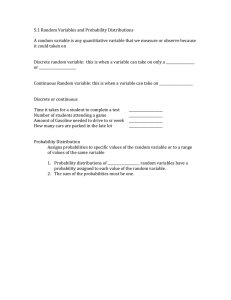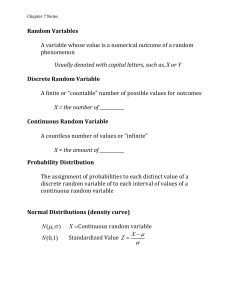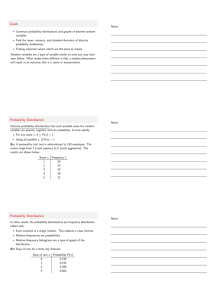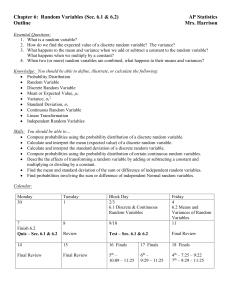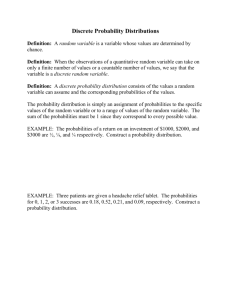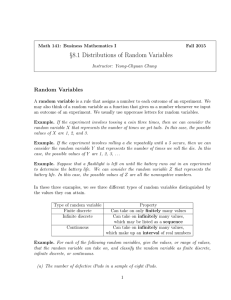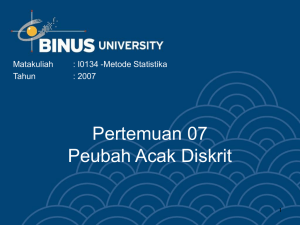Advanced Placement Probability and Statistics
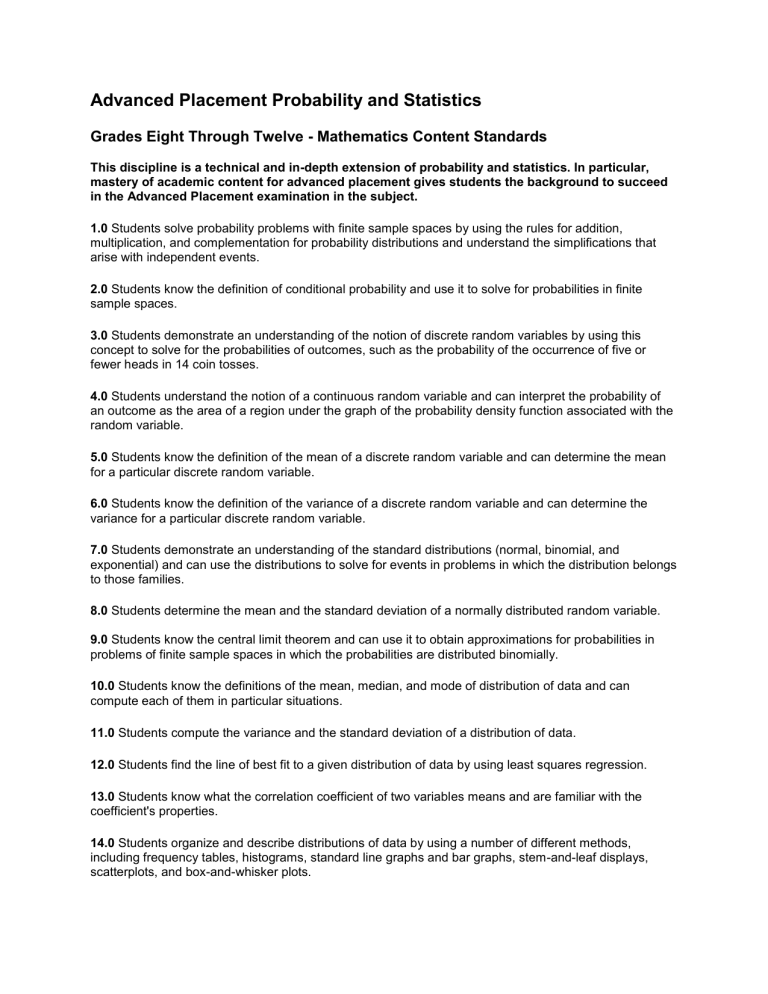
Advanced Placement Probability and Statistics
Grades Eight Through Twelve - Mathematics Content Standards
This discipline is a technical and in-depth extension of probability and statistics. In particular, mastery of academic content for advanced placement gives students the background to succeed in the Advanced Placement examination in the subject.
1.0 Students solve probability problems with finite sample spaces by using the rules for addition, multiplication, and complementation for probability distributions and understand the simplifications that arise with independent events.
2.0 Students know the definition of conditional probability and use it to solve for probabilities in finite sample spaces.
3.0 Students demonstrate an understanding of the notion of discrete random variables by using this concept to solve for the probabilities of outcomes, such as the probability of the occurrence of five or fewer heads in 14 coin tosses.
4.0 Students understand the notion of a continuous random variable and can interpret the probability of an outcome as the area of a region under the graph of the probability density function associated with the random variable.
5.0 Students know the definition of the mean of a discrete random variable and can determine the mean for a particular discrete random variable.
6.0 Students know the definition of the variance of a discrete random variable and can determine the variance for a particular discrete random variable.
7.0 Students demonstrate an understanding of the standard distributions (normal, binomial, and exponential) and can use the distributions to solve for events in problems in which the distribution belongs to those families.
8.0 Students determine the mean and the standard deviation of a normally distributed random variable.
9.0 Students know the central limit theorem and can use it to obtain approximations for probabilities in problems of finite sample spaces in which the probabilities are distributed binomially.
10.0 Students know the definitions of the mean, median, and mode of distribution of data and can compute each of them in particular situations.
11.0 Students compute the variance and the standard deviation of a distribution of data.
12.0 Students find the line of best fit to a given distribution of data by using least squares regression.
13.0 Students know what the correlation coefficient of two variables means and are familiar with the coefficient's properties.
14.0 Students organize and describe distributions of data by using a number of different methods, including frequency tables, histograms, standard line graphs and bar graphs, stem-and-leaf displays, scatterplots, and box-and-whisker plots.
15.0 Students are familiar with the notions of a statistic of a distribution of values, of the sampling distribution of a statistic, and of the variability of a statistic.
16.0 Students know basic facts concerning the relation between the mean and the standard deviation of a sampling distribution and the mean and the standard deviation of the population distribution.
17.0 Students determine confidence intervals for a simple random sample from a normal distribution of data and determine the sample size required for a desired margin of error.
18.0 Students determine the P - value for a statistic for a simple random sample from a normal distribution.
19.0 Students are familiar with the chi - square distribution and chi- square test and understand their uses.

